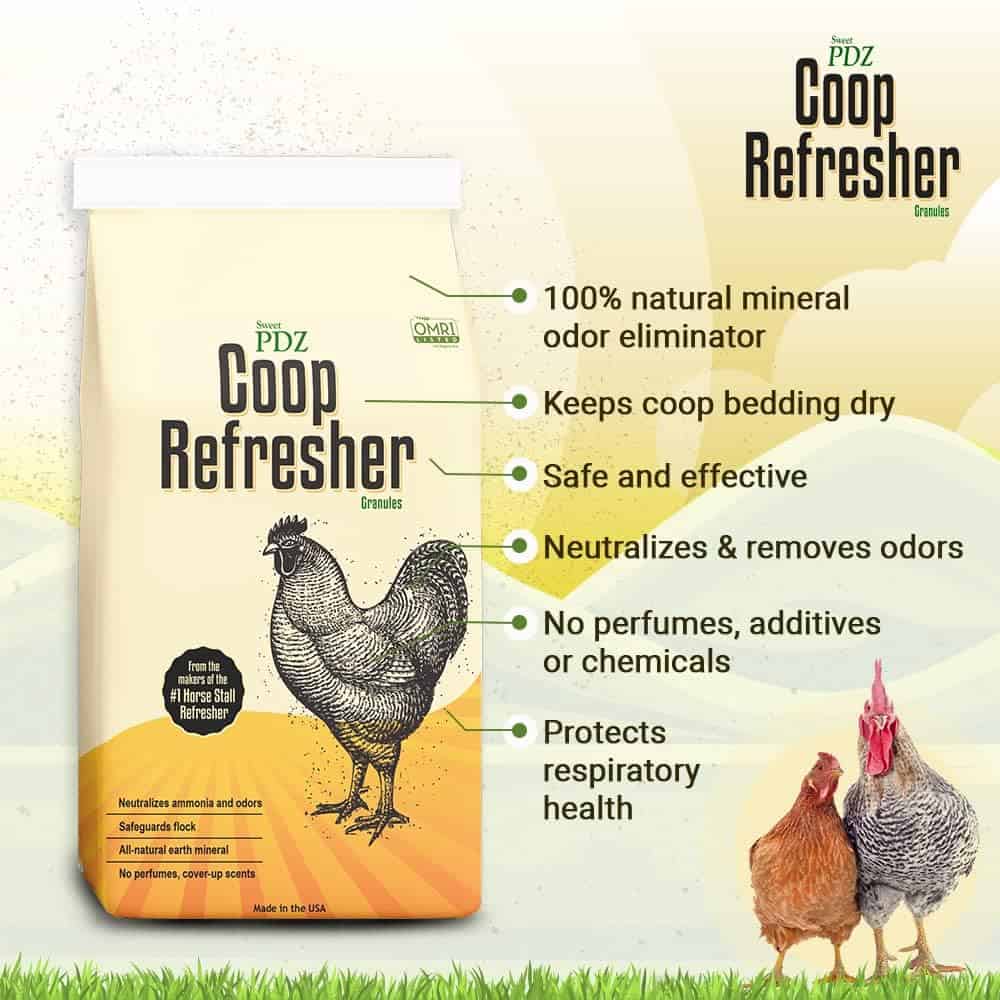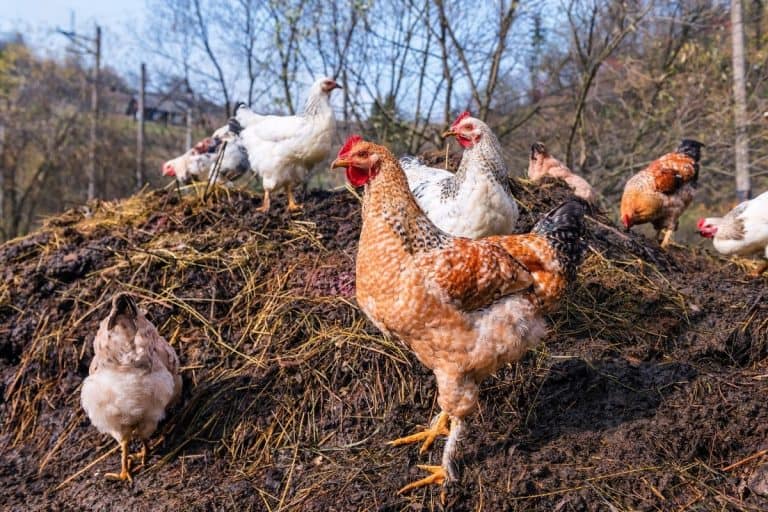When to Butcher your Backyard Chickens? (Best age by breed)
Raising a flock of hens can benefit a family in several ways, like having fresh eggs and teaching responsibility to young children. Then there’s what to do with a hen once it stops laying eggs; should the chicken be butchered, even if it’s an older bird? Can you eat a chicken if they are older, and will it be as tasty as the store-bought bird? This article will help explain what age chickens should be slaughtered, for what purposes, and the best ways to cook an older hen.
As a whole, chickens are generally slaughtered between 6 weeks to 3 years old. Farmers can also butcher them at a more advanced age, between 5 and 10 years old, especially for laying hens which has stopped producing.
Slaughtering a hen once she stops producing eggs is just a part of raising a flock sometimes. However, a lot of people that are raising backyard chickens and using them just for their eggs wouldn’t choose to eat them once they stopped laying. But some people would look at this as an opportunity to make a tasty dinner.
This article will help explain what age is best for slaughtering chickens, which breeds are the most common food types, and why some chickens should be older before butchering.
Hey chicken buddies: Quick heads-up before going further! I've put together a list of stuff I use and love for my flock. If you're curious about what keeps my hens happy, click here to find out.
Three categories of chickens for different purposes
There are three categories that chickens are put into: egg producers, meat birds, and dual-purpose types.
The egg producers are obviously hens that are used only for laying eggs and breeding. Most people will keep these chickens for years until they stop producing. Even after they no longer lay eggs, some will keep them around as pets.
The meat birds are going to be the Cornish crosses and other breeds specifically raised for food production. These birds will be slaughtered at a young age to guarantee tender meat.
Dual-purpose type chickens will be the hens and roosters used for laying eggs and breeding. Once they’ve fulfilled their purpose, they will be butchered for food. These tend to be the birds you would have if you wanted hens for their eggs, with the idea that they would be slaughtered once they were no longer producing. It would be best to have a breed that doesn’t lay for too many years.
Wait, I have some recommendations for you!
Before you go any further, I want you to take a look at some of the recommendations I've handpicked for you. I think these are essential items you should have for your chickens flock. You can check them out and buy them directly from Amazon.
 |  |  |  |
| Essential accessory for your coop | No more tripping over hoses! | Predator protection made easy | Comfort + style is possible |
What chicken breed is most commonly eaten?
A broiler chicken, which refers to the type of category of chicken, is a meat bird. They are engineered and bred to mature quickly to reach market size faster than other types.
Most broiler chickens are a combination of white rock and cornish cross breeds (Most Common Breeds Of Chickens). They weigh around 4.5 lbs and are bred to have larger thighs, legs, and breasts with less chewy muscle. This is most likely the chicken you would buy from your local grocery store.
Cornish game hens are the females of this breed and tend to be much smaller and only weigh about 2.5 lbs at 5 weeks.
It is important that the Cornish crosses are butchered at the right age since they continue to grow so large they can suffer from health problems. Cornish crosses can develop heart issues and even broken legs due to their potentially massive size and weight. If they aren’t used for food at the recommended age, these chickens can get up to 40 lbs or more. They are also not good for breeding, so purchasing chicks every year is necessary.
Other breeds of chickens are used for slaughter, like the Jersey Giant, Bresse, Orpington, or the Brown Leghorn.
As far as the difference between the breeds and how they taste, most people say they all seem to be the same. It’s more about the age and how the bird is cooked that affects its flavor and texture.
What type of chickens my local grocery store have?
The Cornish cross, a broiler, is by far the most common grocery store chicken. Most of these chickens were slaughtered at 6 to 8 weeks of age.

Many supermarkets, restaurants, and farmers choose this chicken breed specifically due to their more flavorful, tender, and abundant meat, as well as the speed at which they reach market-fresh maturity.
What age should a backyard chicken be for slaughter?
The Cornish cross chickens are ready for slaughter at just 6 weeks of age and render more tender and tastier meat than other breeds.
Remember, since they grow the fastest, they need to be butchered much earlier!
There are other breeds of chicken that needed to be slaughtered at a later age due to the slower growth rate. Red broilers and Jersey Giants need to be closer to 12 or 16 weeks of age before being butchered for food.
Some of the breeds like the Orpington and Wyandotte can be butchered as early as 3 months and as late as 8 months.
Below is a table to help reference which age you can slaughter your chickens, depending on what you are wanting them for and how tender you want the meat to be.
| Type of chicken | Best age for slaughter | Meat tenderness |
| Cornish game hen | 5 weeks | Smaller and most tender |
| Broiler-fryer | 6 to 9 weeks (ideally 7) | More tender and flavorful |
| Roasters | 12 to 20 weeks | Tougher and good for roasting |
| Capons (Neutered males) | 16 weeks to 8 months | Larger than most chickens but still tender |
| Stewing/baking hens (Laying hen that has most likely stopped producing) | 10 months to 3 years | Not as tender but still flavorful |
Can a chicken be too old to eat?
Many farms have hens that produce eggs for years, some as long as 5 to 10. When these chickens stop laying eggs, they are more expensive to house and feed than they are worth. At that point, many owners will choose to butcher these hens for food instead of keeping them around.
They will certainly not be as tender as a young Cornish cross you raised, or some chicken breast you bought from the grocery store, but they will certainly go to use and still be delicious.
An older hen will be tougher than a young chicken butchered at the prime age for meat, this doesn’t mean that it’s less flavorful. Many people will slow cook the hen in either a crock pot or roast them for hours at a low temperature in the oven to help tenderize the meat.
The bones from an older hen will also make a very nutritious and rich bone broth or stock that will go beautifully in any meal or soup.
A very helpful technique to use with an older and tougher bird is brining. Brining the bird before cooking will help to ensure that the meat from an older hen will be more tender and flavorful. Letting the bird rest in the refrigerator for several days, with or without a brine, will also help to prevent tough and chewy meat.
A bird is never too old to eat, but it is important that the chicken you are choosing to slaughter is in good health. Eating a chicken that looks ill would be unwise.
Can you cook and eat freshly butchered chicken?
For centuries, people have slaughtered animals and eaten them right away. A chicken that you raised and butchered would not be any different.
However, once your chicken is dead, it will quickly undergo rigor mortis, which would make it stiff and harder to work with, but this will eventually go away, and the bird will be flexible again. Older chickens tend to stay in rigor mortis longer than young ones.
If you want the bird to taste better and have a nicer texture it is best that you allow the chicken to rest in the refrigerator for several days (at least 24 to 48 hours). This is helpful for older birds as well as freshly butchered ones, plus it will allow for the rigor mortis to pass.
This process of resting the meat will cause a chemical reaction in the meat’s enzymes, breaking down the connective tissue in the muscles, this allows for the chicken to become more tender. Resting a chicken for 3 to 5 days is completely fine and will not cause it to decompose or rot.
Will I save money raising chickens for meat?
You will not save yourself money raising chickens, but you will still get a lot out of having a flock; like fresh eggs and meat as well as entertainment.

But you can purchase chicken and eggs from the grocery store for pretty cheap, so it would seem that raising a flock of chickens for either reason doesn’t save you any money (read my full comparison here).
Paying for their feed, housing, and enrichment is also somewhat expensive. Plus when you consider how much time and effort you have to spend on feeding them and cleaning up after them, it seems more like a labor of love than a money saver.
Overall, having chickens for either the purpose of eggs, meat or both is an important part of self-sustainability a lot of people need. And raising a flock can certainly be the tasty and rewarding experience that a family is looking for.
Essential Tools for Chicken Owners
Check my curated list of essential products!
I’ve gathered all the best products that have helped me with raising my chickens, so you don’t waste time on bad ones.
Find my complete list of recommendations here.
For more tips, guides, and recommendations, you should definitely subscribe to my newsletter.
Use the form below, it’s free.






